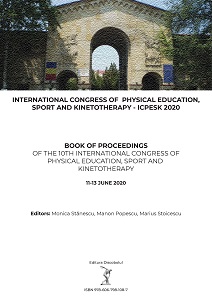WHEN BEING IN SOCIAL EXCLUSION RISK BECOMES RISKIER: SCHOOL OF SLIMNIC, VRANCEA, ROMANIA, IN PANDEMIC
WHEN BEING IN SOCIAL EXCLUSION RISK BECOMES RISKIER: SCHOOL OF SLIMNIC, VRANCEA, ROMANIA, IN PANDEMIC
Author(s): Dorina CROITORU, Ana GAVRILESCU
Subject(s): Social Sciences, Education, Sociology, School education, Ethnic Minorities Studies, Inclusive Education / Inclusion, Distance learning / e-learning
Published by: Discobolul Publishing House
Keywords: social exclusion risk; distance education; COVID-19 pandemic; Roma children;
Summary/Abstract: For the whole world, the COVID-19 pandemic is a risk situation. All domains of activity are certainly affected by isolation and social distancing measures. Each social field is differently affected, but the Education sector is facing major challenges for teachers, students and institutional managers. In Romania, school activities have been suspended starting 12 March and there is a possibility to reopen them in September. Until then, all activity has been transferred online. In our case study, we examined a school from a disadvantaged part of the country, which is included in a predefined project called “Sustainable social and educational integration through sports activities”. The project takes place at the National University of Physical Education and Sport, Bucharest, Romania, in partnership with the Norwegian School of Sport Sciences. The objective of the project is to facilitate the educational and social integration of 2600 children at risk of social exclusion, selected from the 8 development regions of the country, through integrated activities based on sport. During school closure in the spring of 2020 (due to the COVID-19 pandemic), the situation for School no. 67, grades 5-8 (a sample that is in the project, mainly Roma population), is as follows: only 3 students have laptops, 2 students have personal computers, and 30 students have smartphones. Out of all 67, 35 communicate online, but 32 do not. The communication methods used for students with no online access include worksheets sent by regular mail, messages sent to keypad phones and talking using the landline."
- Page Range: 24-33
- Page Count: 12
- Publication Year: 2020
- Language: English
- Content File-PDF

